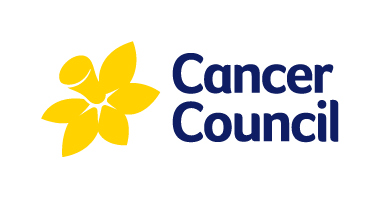What is Breast Cancer?
Breast cancer is the most common cancer in women in Australia (apart from non-melanoma skin cancer) and the second most common cancer to cause death in women, after lung cancer.
Breast cancer is the abnormal growth of the cells lining the breast lobules or ducts. These cells grow uncontrollably and have the potential to spread to other parts of the body. Both men and women can develop breast cancer, although it is uncommon in men.
In Australia, the overall
It is estimated that 19,866 women and 164 men in Australia will be diagnosed with breast cancer in 2021. The risk of being diagnosed with breast cancer by age 85 is 1 in 7 for women.
Breast Cancer Symptoms
Some people have no symptoms and the cancer is found during a screening mammogram or a physical examination by a doctor.
If you do have symptoms, they could include:
-
new lumps or thickening in the breast, especially if in only one breast
-
nipple sores, change in shape of the nipple
-
nipple discharge or turning in
-
changes in the size or shape of the breast
-
skin of the breast dimpling
-
discomfort or swelling in the armpit
-
rash or red swollen breasts
-
ongoing pain that is not related to your menstrual cycle that remains after your period and occurs in only one breast.
Causes of Breast Cancer
Some factors that increase your risk of breast cancer include:
-
increasing age
-
family history
-
inheritance of mutations in the genes BRCA2, BRCA1 (more common with Ashkenazi Jewish heritage) and CHEK2
-
exposure to female hormones (natural and administered)
-
starting your period before the age of 12
-
a previous breast cancer diagnosis
-
a past history of certain non-cancerous breast conditions.
Lifestyle factors that can also slightly increase the risk of breast cancer in men and women include:
- being overweight
- not enough physical activity
- drinking alcohol.
There is also an association with some benign breast disease and past exposure to radiation.
Screening for Breast Cancer
Women aged between 50 and 74 are invited to access free screening mammograms every two years via the BreastScreen Australia Program.
Women aged 40-49 and 75 and over are also eligible to receive free mammograms, however they do not receive an invitation to attend.
It is recommended that women with a strong family history of breast or ovarian cancer, aged between 40 and 49 or over 75 discuss options with their GP, or contact BreastScreen Australia on 13 20 50.
Diagnosis for Breast Cancer
Tests to diagnose breast cancer may include:
Physical examination
If you notice any breast changes or a mammogram shows something suspicious, your GP will perform a physical examination, checking both breast and the lymph nodes above your collar bone and above your arms. Your GP will also ask about your medical history and any family history of breast cancer.
Mammogram
A mammogram is a low-dose x-ray that can find changes that are too small to be felt during a physical examination. You should let staff know if you have breast implants before you have the mammogram.
Ultrasound
If a mammogram picks up breast changes you may have an ultrasound. This is a painless scan using soundwaves to make a picture of your breast.
Biopsy
If breast cancer is suspected, a doctor removes some of the breast tissue for examination by a pathologist under a microscope.
Treatment for Breast Cancer
Treatment depends on the extent of the cancer.
Staging
Staging involves assessing the size of the breast cancer and whether it has spread to the draining lymph nodes under the arm. A CT scan of the chest and liver and bone scan are done to check the sites to which breast cancers most commonly spread.
Surgery
For localised breast cancer, the most extensive surgical option is to remove the breast and lymph nodes under the arm. When part of the breast is removed it is referred to as breast conserving surgery or a lumpectomy. Radiotherapy is generally recommended after breast conserving surgery.
When the whole breast is removed it is called a mastectomy.
Breast prostheses and reconstruction
Before or after surgery you may think about how to restore your breast shape. You may consider a breast prosthesis or reconstruction. A breast prosthesis is a synthetic breast or part of a breast worn in a bra or under clothing to replace part or all of your breast. Breast reconstruction is an operation to make a new breast. Talk to your health care team about your options.
Chemotherapy
Chemotherapy may be used to help shrink the cancer before surgery, if the risk of cancer returning is high or if the cancer returns after surgery or radiation therapy. It may also be used if the cancer is HER2 positive or does not respond to hormone therapy.
Radiation therapy (radiotherapy)
Radiation therapy (radiotherapy) is recommended after breast-conserving surgery to help destroy any undetected cancer. It is also recommended if lymph nodes were removed from under the arm and there is a risk that the cancer will return to this area. Radiation therapy can sometimes be used after a mastectomy if there is a risk of the cancer returning to the chest area.
Hormone therapy uses drugs to reduce the levels of female hormones in the body. This helps to stop or slow the growth of hormone receptor positive cancer cells. The type of hormone therapy you have will depend on your age, the type of breast cancer and whether you have reached menopause. Targeted therapy drugs attack specific targets inside cancer cells. The drugs that are currently available are only useful for HER2 positive breast cancer. In some cases of breast cancer, your medical team may talk to you about palliative care. Palliative care aims to improve your quality of life by alleviating symptoms of cancer. As well as slowing the spread of breast cancer, palliative treatment can relieve pain and help manage other symptoms. Treatment may include radiotherapy, chemotherapy or other drug therapies.Hormone therapy
Targeted therapy
Palliative care
Treatment Team
Depending on your treatment, your treatment team may consist of a number of different health professionals, such as:
- a GP (General Practitioner)- looks after your general health and works with your specialists to coordinate treatment.
- radiologist
- a radiation oncologist
- a radiation therapist
- a medical oncologist
- a breast care nurse
- a surgeon
- a reconstructive (plastic) surgeon
- lymphoedema therapist
- other allied health professionals, such as counsellor and physiotherapists.
Prognosis for Breast Cancer
It is not possible for a doctor to predict the exact course of a disease, as it will depend on each person's individual circumstances. However, your doctor may give you a prognosis, the likely outcome of the disease, based on the type of breast cancer you have, the test results, the rate of tumour growth, as well as your age, fitness and medical history.
The most common types of breast cancer have a very good long-term prognosis, especially if the cancer is found early.
Preventing Breast Cancer
There is no proven method of preventing breast cancer, however the risk of breast cancer can be reduced by lowering alcohol consumption and maintaining a healthy weight.
Women who are at high risk because of a very strong family history may benefit from hormones such as tamoxifen, usually administered over five years. Bilateral prophylactic mastectomy can be considered in women at high risk of breast cancer due to gene mutations.








